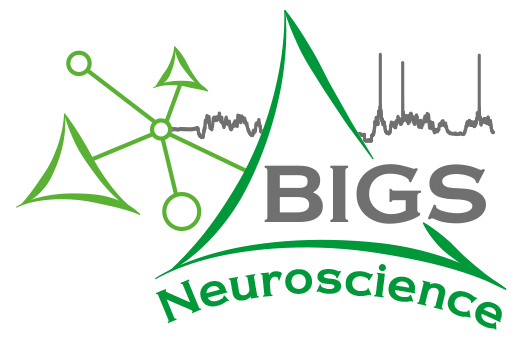Prof. Dr. Kerstin Ludwig
Group Leader
Integrated Craniofacial Genomics - Emmy Nöther Junior Research Group
Institute for Human Genetics
University of Bonn Medical Center
Venusberg-Campus 1
53127 Bonn, Germany
University of Bonn Medical Center
Venusberg-Campus 1
53127 Bonn, Germany
Phone: +49 (0) 228 6885 420
Email: kerstin.ludwig(at)uni-bonn.de
Research Focus
Craniofacial development is a complex process that leads to the formation of the face and skull during early embryonic development. A multitude of coordinated biological processes take place. Although the craniofacial development itself is strongly conserved in evolutionary terms, it also leads to the development of the individual shape of the face. Our understanding of the processes involved in craniofacial development is still very poor. This is partly due to the fact that human biological material from the time of its development is only available for biological investigations to a very limited extent.
In recent years, the increase in „omics“ technologies has led to the identification of a large number of causal mechanisms for various biological processes. These studies included the combination of large-scale genetic studies in specific disease types with extensive functional data sets. With regard to craniofacial development, we have already been able to identify a large number of previously unknown genetic risk regions for the non-syndromal cleft lip and palate (nsLKG) in collaboration with AG Mangold. Of the currently known 39 genetic risk regions, the majority lie in non-coding, intergenic regions with unclear biological function. The goal of our group is to understand the biological processes of craniofacial development and their influence by genetic variation.
On the one hand, genetic risk regions that play a role in craniofacial phenotypes such as nsLKG will be investigated by applying genetic, bioinformatic and functional methods. In cooperation with external partners (Dr. Alvaro Rada-Iglesias, University of Cologne; Prof. Mike Dixon, University of Manchester; Prof. Justin Cotney, University of Connecticut), functional data sets on histone modifications, transcription factor profiles and expression analyses in relevant tissues will be generated. By applying the latest molecular genetic methods (e.g. molecular inversion probes), identified candidate regions are sequenced in large patient and control cohorts of different ethnicities with the aim of identifying highly penetrating mutations in individual patients. At the cohort level, burden analyses will provide evidence of a significant accumulation of rare variants in patients, in functionally relevant regions or in different functional pathways.
For the functional analysis of the findings, in vivo zebrafish model analyses are performed (cooperation with Prof. Benjamin Odermatt, Institute of Anatomy). Due to the short generation time, an embryonic development ex utero and a large number of offspring, this animal model is excellently suited for the investigation of phaentoypes arising during embryonic development. For this purpose, regulatory elements under Tol2-mediated transposition in single cell stages are introduced into embryos and the fluorescence pattern is analyzed up to five days after fertilization. Candidate genes will be investigated by morpholino knockdown or using the new CRISPR / Cas9 technology.
The results obtained by our group will provide new insights into the molecular mechanisms underlying craniofacial development. They will also contribute to a better understanding of the regulatory architecture of non-coding elements and their role in embryonic development and human malformations.
In recent years, the increase in „omics“ technologies has led to the identification of a large number of causal mechanisms for various biological processes. These studies included the combination of large-scale genetic studies in specific disease types with extensive functional data sets. With regard to craniofacial development, we have already been able to identify a large number of previously unknown genetic risk regions for the non-syndromal cleft lip and palate (nsLKG) in collaboration with AG Mangold. Of the currently known 39 genetic risk regions, the majority lie in non-coding, intergenic regions with unclear biological function. The goal of our group is to understand the biological processes of craniofacial development and their influence by genetic variation.
On the one hand, genetic risk regions that play a role in craniofacial phenotypes such as nsLKG will be investigated by applying genetic, bioinformatic and functional methods. In cooperation with external partners (Dr. Alvaro Rada-Iglesias, University of Cologne; Prof. Mike Dixon, University of Manchester; Prof. Justin Cotney, University of Connecticut), functional data sets on histone modifications, transcription factor profiles and expression analyses in relevant tissues will be generated. By applying the latest molecular genetic methods (e.g. molecular inversion probes), identified candidate regions are sequenced in large patient and control cohorts of different ethnicities with the aim of identifying highly penetrating mutations in individual patients. At the cohort level, burden analyses will provide evidence of a significant accumulation of rare variants in patients, in functionally relevant regions or in different functional pathways.
For the functional analysis of the findings, in vivo zebrafish model analyses are performed (cooperation with Prof. Benjamin Odermatt, Institute of Anatomy). Due to the short generation time, an embryonic development ex utero and a large number of offspring, this animal model is excellently suited for the investigation of phaentoypes arising during embryonic development. For this purpose, regulatory elements under Tol2-mediated transposition in single cell stages are introduced into embryos and the fluorescence pattern is analyzed up to five days after fertilization. Candidate genes will be investigated by morpholino knockdown or using the new CRISPR / Cas9 technology.
The results obtained by our group will provide new insights into the molecular mechanisms underlying craniofacial development. They will also contribute to a better understanding of the regulatory architecture of non-coding elements and their role in embryonic development and human malformations.
